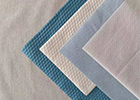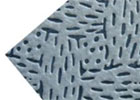Meltblown Spunlace Nonwoven: The Fusion of Strength and Softness in Fabric Technology
Introduction to Meltblown Spunlace Nonwoven Fabrics
Overview of Meltblown Spunlace Nonwoven Fabric technology
Meltblown spunlace nonwoven fabrics are a type of nonwoven material that is produced by using high-velocity air to blow a melted polymer solution onto a conveyor belt. This innovative technology allows for the creation of fabrics with fine fibers and a unique structure, providing them with specific properties such as filtration efficiency, breathability, and softness. The process involves the conversion of thermoplastic polymers into continuous filaments, which are then cooled and collected to form a web-like structure. Meltblown spunlace nonwoven fabrics are widely used in various industries, including medical, hygiene, and filtration due to their excellent characteristics.
Advantages of Meltblown Spunlace Nonwoven in fabric industry
In comparing Meltblown Spunlace Nonwoven Fabrics to traditional woven fabrics, several advantages become apparent:
| Advantages | Description |
| Lightweight | Meltblown spunlace nonwovens are lightweight yet durable, making them ideal for applications where weight is a concern. |
| High Filtration Efficiency | The fine fibers in these fabrics provide excellent filtration properties, making them suitable for medical and industrial filtration needs. |
| Soft Texture | Due to the delicate nature of the fibers, meltblown spunlace nonwoven fabrics have a soft texture, offering comfort in applications like hygiene products or apparel. |
| Breathability | These fabrics allow for air permeability due to their porous structure, enhancing comfort when used in clothing or masks. |
These advantages make meltblown spunlace nonwoven fabrics a versatile choice in the fabric industry with various applications across different sectors.
Meltblown Spunlace Nonwoven: Composition and Manufacturing Process
Materials used in Meltblown Spunlace Nonwoven production
Meltblown spunlace nonwovens are crafted from thermoplastic polymers such as polypropylene or polyester. These materials are melted and extruded into fine fibers that form the basis of the fabric.
Step-by-step process of manufacturing Meltblown Spunlace Nonwoven fabric
1. Melt Extrusion: Thermoplastic polymers are melted and forced through spinnerets to create fine filaments.
2. Fiber Formation: The molten fibers are then blown by high-velocity air onto a conveyor belt.
3. Web Formation: The collected fibers form a web-like structure as they cool down.
4. Binding: The fibers entangle naturally or through additional bonding processes.
5. Finishing: The fabric is rolled or cut into desired sizes for various applications.
This straightforward manufacturing process results in versatile meltblown spunlace nonwovens with exceptional properties for diverse industry applications.
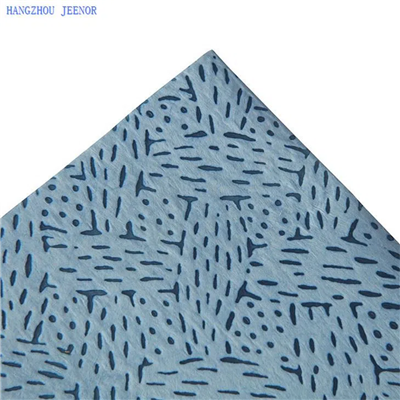
Strength Properties of Meltblown Spunlace Nonwoven
Tensile strength and durability of Meltblown Spunlace Nonwoven
When assessing the tensile strength and durability of Meltblown Spunlace Nonwoven fabrics, they exhibit remarkable performance. The fine fibers in these materials contribute to their strength, allowing them to withstand stretching forces without tearing or losing integrity over time. This makes them suitable for applications that require resilience and longevity.
Impact resistance and tear strength in Meltblown Spunlace Nonwoven
Moreover, Meltblown Spunlace Nonwovens demonstrate excellent impact resistance and tear strength, ensuring they can endure external pressures and handling without succumbing to damage easily. The unique structure of these fabrics enhances their ability to resist tearing, making them reliable choices for demanding environments where mechanical stresses are common.
Softness Characteristics of Meltblown Spunlace Nonwoven
Softness and comfort attributes of Meltblown Spunlace Nonwoven
The softness and comfort provided by Meltblown Spunlace Nonwoven fabrics make them a preferred choice for various applications. The fine fibers used in the manufacturing process create a gentle and plush texture that feels smooth to the touch. This softness enhances user experience, especially in products meant to come in direct contact with the skin, providing a pleasant sensation and reducing any potential discomfort.
Skin-friendly and non-irritating properties of Meltblown Spunlace Nonwoven
Additionally, Meltblown Spunlace Nonwoven materials are known for their skin-friendly and non-irritating characteristics, making them suitable for sensitive skin types. The hypoallergenic nature of these fabrics minimizes the risk of allergic reactions or irritation, ensuring optimal comfort even during prolonged use. This feature is particularly beneficial in applications where avoiding skin irritation is essential, such as in medical or personal care products.

Applications of Meltblown Spunlace Nonwoven Fabrics
Medical and healthcare applications of Meltblown Spunlace Nonwoven
In medical and healthcare settings, Meltblown Spunlace Nonwoven fabrics find extensive use due to their softness, comfort, and skin-friendly properties. These materials are commonly employed in wound dressings, surgical drapes, face masks, and other medical textiles where maintaining a gentle touch on the skin is crucial for patient comfort and recovery. The non-irritating nature of Meltblown Spunlace Nonwovens adds to their suitability for sensitive areas and promotes a hygienic environment in healthcare facilities.
Hygiene and personal care products utilizing Meltblown Spunlace Nonwoven
The superior softness and hypoallergenic features of Meltblown Spunlace Nonwoven make them ideal for hygiene and personal care applications. Products such as baby wipes, feminine hygiene products, facial tissues, and cosmetic wipes benefit from the delicate texture and non-irritating nature of these fabrics. The use of Meltblown Spunlace Nonwovens ensures a gentle contact with the skin, enhancing comfort during daily routines and promoting a feeling of wellbeing.
Sustainability and Eco-Friendly Aspects of Meltblown Spunlace Nonwoven
Biodegradability and recyclability of Meltblown Spunlace Nonwoven
Meltblown Spunlace Nonwoven fabrics exhibit favorable biodegradability characteristics, making them environmentally conscious choices. These fabrics can naturally decompose over time, reducing the burden on landfills and minimizing environmental impact. Moreover, certain variations of Meltblown Spunlace Nonwovens are designed to be recyclable, further enhancing their eco-friendly profile by promoting a circular economy approach. By integrating biodegradable and recyclable materials into various products, industries can align with sustainable practices and contribute towards a greener future.
Environmental impact and sustainability initiatives in Meltblown Spunlace Nonwoven production
The production of Meltblown Spunlace Nonwovens is increasingly adopting sustainability initiatives to reduce environmental repercussions. Manufacturers are exploring energy-efficient processes, implementing water conservation strategies, and optimizing material usage to lower their carbon footprint. Additionally, advancements in technology have facilitated the incorporation of recycled fibers or bio-based materials into the production of Meltblown Spunlace Nonwoven fabrics, further enhancing their sustainability credentials. By prioritizing eco-conscious practices throughout the manufacturing process, the industry aims to enhance resource efficiency and minimize ecological harm.
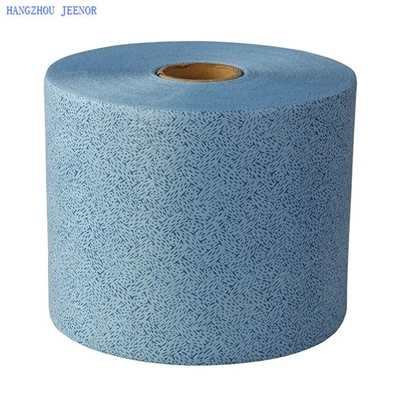
Innovations and Future Trends in Meltblown Spunlace Nonwoven Technology
Advancements in Meltblown Spunlace Nonwoven manufacturing processes
Meltblown Spunlace Nonwoven technology continues to evolve with a focus on enhancing manufacturing processes for improved sustainability. By integrating innovative production techniques such as air-jet spinning or electrospinning, manufacturers can achieve higher efficiency and product quality while reducing energy consumption and waste generation. Additionally, the development of advanced control systems and automation in Meltblown Spunlace Nonwoven production facilities streamlines operations, further optimizing resource utilization and minimizing environmental impact.
Emerging trends and applications of Meltblown Spunlace Nonwoven in various industries
The versatility of Meltblown Spunlace Nonwoven materials has led to their adoption across a wide range of industries for diverse applications. In the medical sector, these fabrics are utilized for surgical masks, wound dressings, and sanitizing wipes due to their high filtration efficiency and soft texture. Moreover, the automotive industry utilizes Meltblown Spunlace Nonwovens for interior upholstery and cabin air filters to enhance comfort and air quality. As sustainability becomes a key focus for businesses, the use of eco-friendly Meltblown Spunlace Nonwoven materials is expected to increase in sectors such as packaging, construction, and agriculture, driving innovation and creating new opportunities for environmentally conscious solutions.
Comparison with Traditional Fabric Technologies
Differences between Meltblown Spunlace Nonwoven and conventional fabric materials
Meltblown Spunlace Nonwoven technology differs from conventional fabric materials in key aspects. Unlike traditional fabrics produced through weaving or knitting, Meltblown Spunlace Nonwovens are manufactured using a unique process that involves extruding molten polymer fibers onto a rotating drum. This method allows for the creation of fine fibers with diameters in the micro to nanoscale range, resulting in materials that offer superior filtration capabilities, softness, and breathability compared to woven fabrics. Additionally, the absence of interlacing yarns in Meltblown Spunlace Nonwovens provides enhanced flexibility and conformability, making them ideal for various applications requiring intricate shapes or contours.
Benefits of Meltblown Spunlace Nonwoven over traditional fabrics
The advantages of Meltblown Spunlace Nonwoven materials over traditional fabrics are significant. These nonwovens exhibit higher tensile strength and tear resistance while maintaining lightweight properties, making them durable yet comfortable to use. The ultra-fine fibers in Meltblown Spunlace Nonwovens allow for exceptional filtration efficiency, making them suitable for applications where particle filtration is critical, such as air and liquid filtration systems. Furthermore, the production process of Meltblown Spunlace Nonwoven technology can be tailored to control fiber characteristics and surface properties, enabling customization for specific performance requirements in various industries.
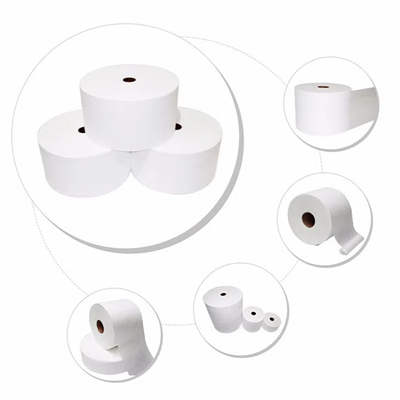
Comparison with Traditional Fabric Technologies
Differences between Meltblown Spunlace Nonwoven and conventional fabric materials
The Meltblown Spunlace Nonwoven technology stands apart from traditional fabric materials in crucial ways. Unlike fabrics created through weaving or knitting, Meltblown Spunlace Nonwovens are made by extruding molten polymer fibers onto a rotating drum. This unique process produces fine fibers in the micro to nanoscale range, resulting in materials that excel in filtration, softness, and breathability compared to woven fabrics. Moreover, the absence of interlacing yarns in Meltblown Spunlace Nonwovens enhances their flexibility and conformability, making them suited for applications requiring intricate shapes.
Benefits of Meltblown Spunlace Nonwoven over traditional fabrics
The advantages of Meltblown Spunlace Nonwoven materials over traditional fabrics are notable. These nonwovens offer higher tensile strength and tear resistance while remaining lightweight, ensuring durability and comfort. The ultra-fine fibers enable exceptional filtration efficiency, ideal for critical applications like air and liquid filtration systems. Additionally, the production process of Meltblown Spunlace Nonwoven technology allows customization of fiber characteristics and surface properties for specific performance requirements across industries.
Conclusion
Summary of the benefits and features of Meltblown Spunlace Nonwoven
Meltblown Spunlace Nonwoven materials bring superior filtration capabilities, softness, breathability, and customizability compared to traditional fabrics. The technology offers high tensile strength, tear resistance, and lightweight properties while enabling exceptional filtration efficiency.
Future potential and growth opportunities in Meltblown Spunlace Nonwoven industry
The future of the Meltblown Spunlace Nonwoven industry looks promising with increasing demand for advanced filtration solutions in various sectors. Customizable properties and high-performance characteristics position these materials for continued growth and innovation in diverse applications.




